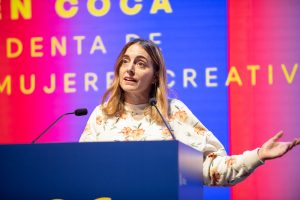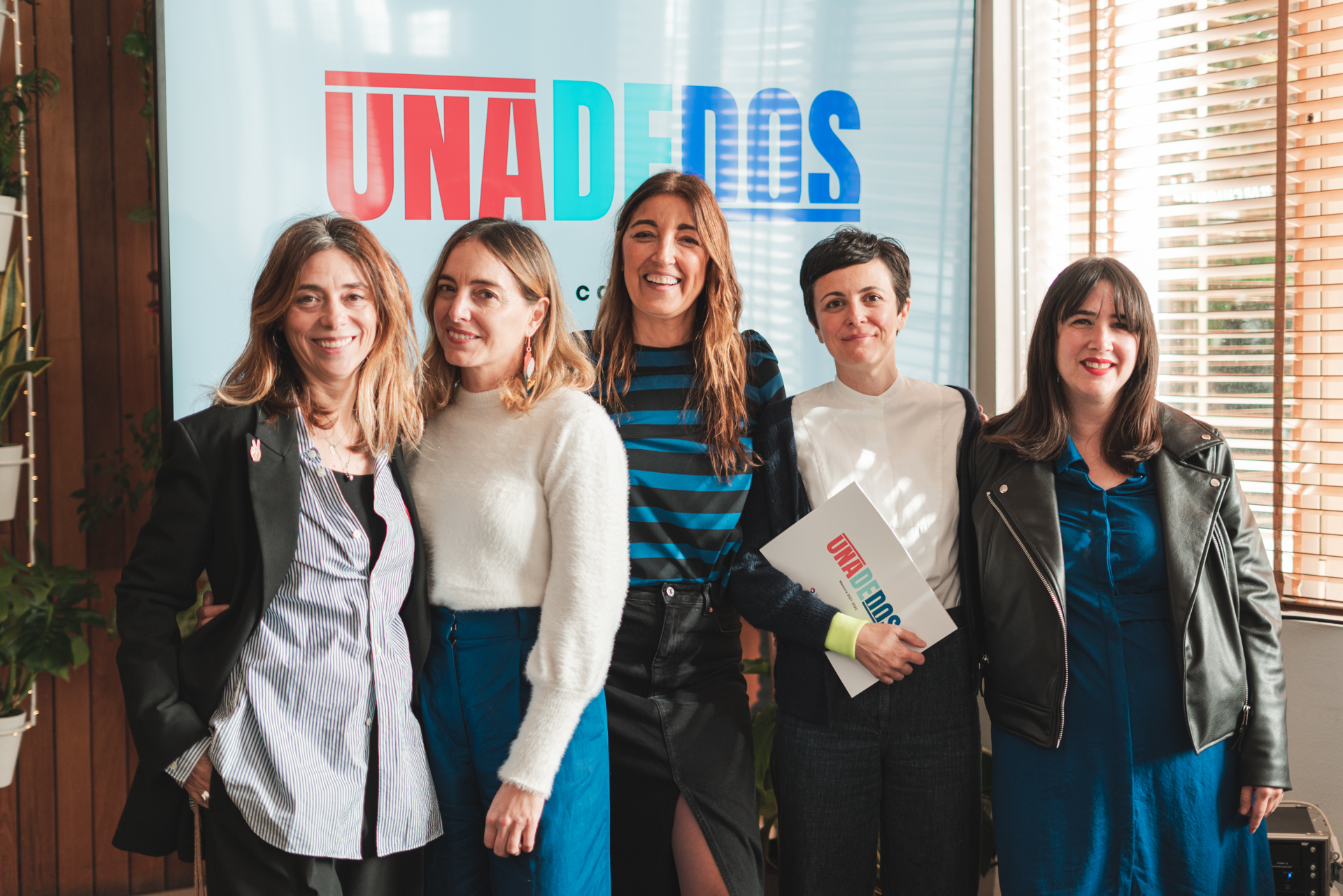
Más Mujeres Creativas (MMC) is an association made up of 200 women. Led by a board of directors and with the support of a work team, they communicate on a daily basis and hold at least one General Assembly per year in which they submit important decisions to a vote. They define themselves as a non-profit association that makes visible and promotes Spanish creative female talent with the purpose of building a more diverse advertising industry and thus achieving a fairer society.
Since 2016, this women’s association has driven real change through more than 40 initiatives, and as a result they have managed to equalize the base of male and female creatives. But that equality does not yet extend upwards or to all levels, as there is still a long way to go. After reaching several achievements in their trajectory, this last year 2023 they have managed to open the association so that it is possible to join new members for a small economic support, becoming part of this community and enjoying its advantages.

Belén Coca, President of Más Mujeres Creativas.
We talked to Belén Coca, president of Más Mujeres Creativas.
How did the idea or the origin of Más Mujeres Creativas come about?
The idea had been ruminating for several years, since 2012 or so, among several female creative directors: the few of us who were in the juries of the sector. Always in the minority, always the same ones. We were aware that there was much more female talent that remained much more invisible than us and we wanted to do something to make them and the problem visible. At first there were only isolated initiatives supported by the Club de Creativos until Emma Pueyo and I had a coffee one day and thought about getting together and moving it as a collective.
On #8M 8 years ago, in 2016, 8 female creative directors created a secret Facebook group that worked as a “radar of creatives”: each one invited those she knew and these could invite more. In three days we were 2000 women sharing our problems and asking for a change in the sector, so in a natural way we became a collaborative platform that was officially launched on C-Day 2016, a month later.
What do you think are the main challenges facing creative women in the industry today in your experience?
We face invisible and visible challenges. The invisible ones are the unconscious biases, limiting beliefs and inertias that from our education and from the traditionally masculinized structures of our sector are difficult to banish because many men do not even see them, since the environment is designed to suit them and they are not aware of their historical privileges.
The visible ones are the lack of work-life balance and the pay gap, which drive women out of the sector before men, as our study “Why you leave” shows. Until recently these challenges were also invisible, but thanks to the data we can no longer look the other way.
What kind of activities do you do to inspire and empower creative women? Do you have anything specific in mind for this 8M?
For us it’s 8M all year round, but the day before we will celebrate our anniversary and the success of our community by gathering our members in Madrid and Barcelona to prepare very creative posters for the mani and on Friday we will demand our rights in the streets. It is part of our #HastaelTecho initiative in which anyone can also participate through our networks. Apart from that, we carry out countless awareness-raising actions, mentoring, networking, etc.
How can we measure the impact of More Creative Women initiatives in the creative community?
We have been pushing the UnaDeDos commitment for 3 years with the support of Diageo, Club de Creativos and more than 50 companies and institutions in the sector to achieve 50% female creative directors by 2030 (the sector average in 2021 was 22%).With this project we measure the evolution year by year among UnaDeDos agencies, but beyond the appointments, it can also be measured in the conversation and debate we generate or in the careers we are promoting. For example, the greater number of female creatives from our country who are being selected by Cannes for its See it be it program with the help of our network of mentors. Last year Ángela Pacheco was chosen for the cohort and this year we are crossing our fingers because we have at least 3 finalists.

Can you tell us any success or inspirational stories that have come about through the work of the association?
I don’t want to name names, but our work becomes meaningful when creatives who get promoted, collect an award, land their dream job or start their own business tell us: thank you for your help and for making me see that I could do this. When they tell you that, you know that all the effort is worth it.
Having observed your growth over the years, how do you see the future of women in the creative industry in Spain?
The future will be UnaDeDos or it won’t be. By that I mean that if the big agencies do not make the cultural change they have pending, young talent and women will find other more interesting ways to deploy their creative talent. We are seeing more and more models of creative work and success in our community that are beyond conventional advertising and it is likely that this trend will continue to grow.
Interview by Carla Lara



